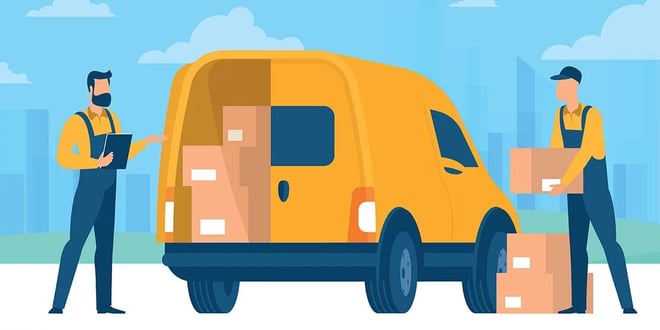Delivery management oversees various processes that ensure that goods are transferred efficiently and effectively from one point to another.
Delivery management, also popularly referred to as fleet or dispatch management, answers the question, “How will this product get from point A to point B?” Answering this question has become more challenging for companies given that customers’ demands, along with government regulations, have changed.

In this post, we will tackle the best way to optimize delivery management and how investing in the right tools helps.
Who's Responsible for Managing Deliveries?
The individual responsible for deliveries is typically the logistics, dispatch, or delivery manager. This person is in charge of managing drivers, assets, and the dispatch team.
In smaller organizations, the delivery manager acts as an in-between for delivery personnel and warehouse employees. In bigger companies, he or she takes on the role of a troubleshooter rather than an intermediary, as orders are already programmed in a solution.
How Can You Optimize Delivery Management?
The key to improving delivery management is improving operational efficiency across processes. This is necessary regardless of whether the company is a startup, a global brand, or anywhere in between. Delivery operations must always aim to achieve high customer satisfaction despite high volumes of deliveries and minimal resources used.
Achieving cost efficiency and a high level of consumer service are possible if delivery managers use the right strategies and tools. Here are the different strategies necessary to optimize delivery management.
Automate dispatch
One cannot run a delivery on demand service without an automated dispatching process. Scheduled deliveries give more time for route planning, but on-demand businesses should be able to send out orders as quickly as possible.
An automated dispatch solution allows businesses to automatically assign orders to the nearest drivers so they reach customers within a short time frame. Automation also gives delivery managers more time to handle other tasks.
Optimize routes
Planning routes manually using excel sheets should be a thing of the past, as it cannot compare to the computational abilities of last mile delivery route optimization software. A sophisticated route optimization solution, after all, can generate the most efficient routes for drivers in a matter of minutes, factoring in many variables such as driver schedule, delivery windows, vehicle capacity, and weather and traffic conditions.
The software can also provide more accurate ETAs, which in turn results in higher customer satisfaction levels.
Track vehicles in real-time
Real-time visibility on drivers and vehicles helps the warehouse team or dispatchers determine driver behaviors that can potentially cause delivery delays. It paves the way for better customer service, as a tracking solution will help provide customers with realistic delivery timeframes.
Improve internal communication
Drivers must be able to communicate with the back-end team quickly, especially when facing a condition that hinders them from making timely deliveries.
For example, drivers having difficulties locating a delivery point must be able to contact the dispatcher for help. Improved team communication is possible with the right delivery management solution that offers visibility into the details of the delivery and driver location.
Generate metrics to improve driver performance
The delivery manager must track the behavior of drivers and be able to generate fleet metrics so he or she can help improve driver and vehicle performance. Having metrics will save the company money on fuel and maintenance. Tracking can also help reduce insurance costs, as managers can provide insurance brokers data on fleet performance.
Delivery management is no walk in the park. But enterprises equipped with the right tools, such as advanced delivery management software, can optimize each process to ensure current and long-term profitability. After all, optimizing delivery management is necessary for keeping costs low while making customers satisfied.